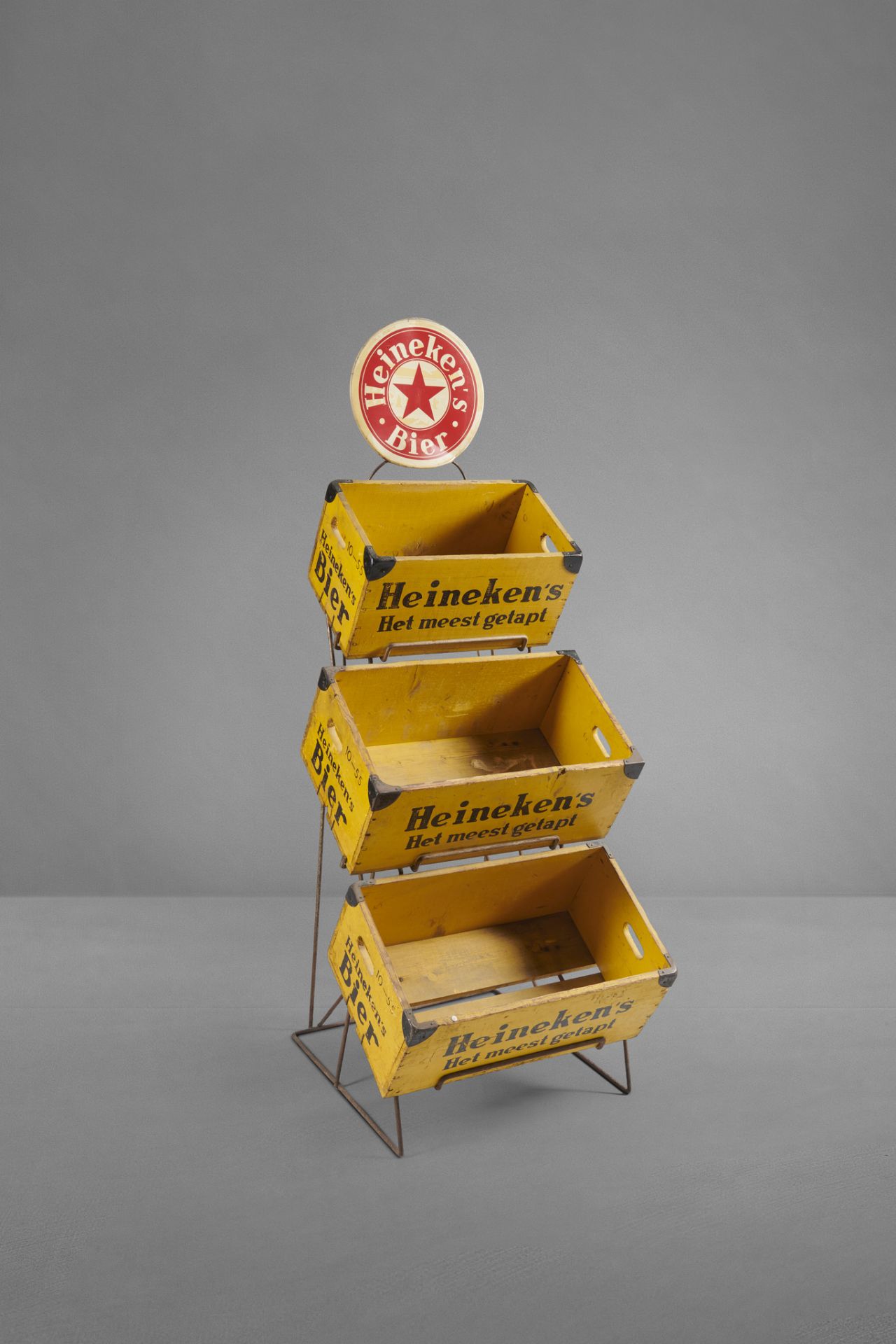INFO
Shop display with three yellow Heineken beer crates
1955
wood, metal, paint
h 155 x w 65 x d 55.5 cm

Crates of draught beer
It is hard to imagine that long ago Heineken delivered bottled beer in wooden crates. This shop display recalls those days. How this began (and ended) requires a lesson in beer crate history.
Ever since its establishment in 1873, Heineken’s Bierbrouwerij Maatschappij (HBM) has been trying to improve the shelf life of beer. A crucial invention in this respect was the heating method of the French bacteriologist Louis Pasteur.
From cask to bottle
With a view to export to South America, the new Rotterdam brewery conducted an experiment with ‘pasteurisation’ in 1874. This was difficult to do with beer in wooden barrels. And so Heineken bottled its export beer from then on – in dark brown glass, for better preservation. The bottles were closed with a cork, but this dried out during long journeys resulting in leakage and spoilage. From 1880 onwards, the export bottles received a crown cap. They were packed in wooden crates with a straw sleeve over each bottle for protection.
Bottled beer
In 1894, bottled beer also received a major boost in the Dutch hotel and catering industry thanks to Claude Boucher’s glass-blowing machine. Heineken agents throughout the Netherlands were responsible for bottling and distributing the beer. In addition to bottled beer, they also supplied sparkling water and soft drinks. It was not until 1930 that Heineken’s Rotterdam branch began to bottle its own beer. The pul – the new ‘steinie type’ of beer bottle – was intended for the Dutch home consumer. The bottle did not have a crown cap, as prescribed by the BNB (Union of Dutch Breweries), but an Alka seal: an aluminium cap with a layer of cork underneath. You could rip it off.
With and without a lid
The first Alka bottles were packed per 24 in wooden beer crates with a plywood lid. This was designed to meet the needs of the catering industry, liquor stores and grocery shops. Due to a lack of storage space, they often stored their bottled beer outside, where the rain washed the labels off the bottles and the sun degraded the taste of the beer. Gradually, however, open crates for the Alka bottles came into circulation, with metal corners to reinforce them.

Only on birthdays
Although bottled beer caught on with the middle class, customers rarely bought a whole case at once. In the lean years between 1930 and 1950, people would only buy beer to celebrate birthdays. Even from the well-stocked display of yellow crates, people would just grab individual bottles. This type of crate appeared in the early 1950s, printed with the text ‘Heineken’s / The most tapped.’ Literally, but also colloquially in the sense of ‘popular.’
Stacking crates
The yellow wooden crate was a defining image for some twenty years. That is, until the newspaper Algemeen Handelsblad reported on 23 July 1970: ‘Wavin in Hardenberg received an order from Heineken to supply more than one million plastic crates. They are for beer bottles that can be stacked on top of and next to each other. The order stems from Heineken’s decision to switch from wooden to plastic crates.’